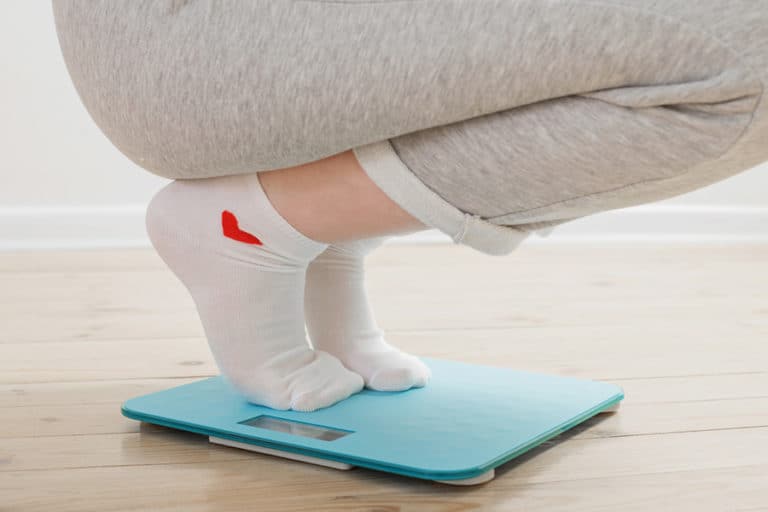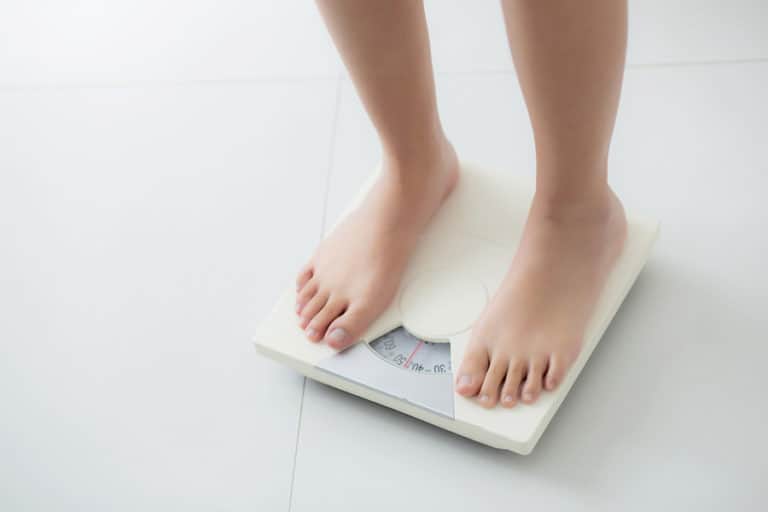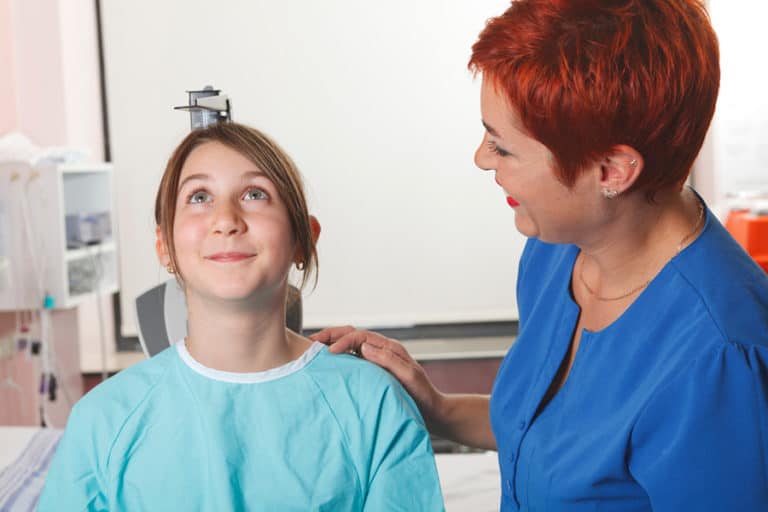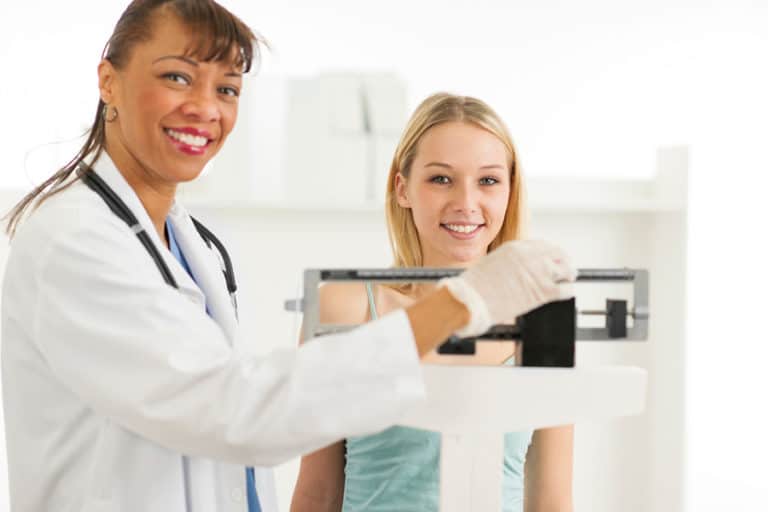11 Incredibly Easy Fitness Tips for Teenagers
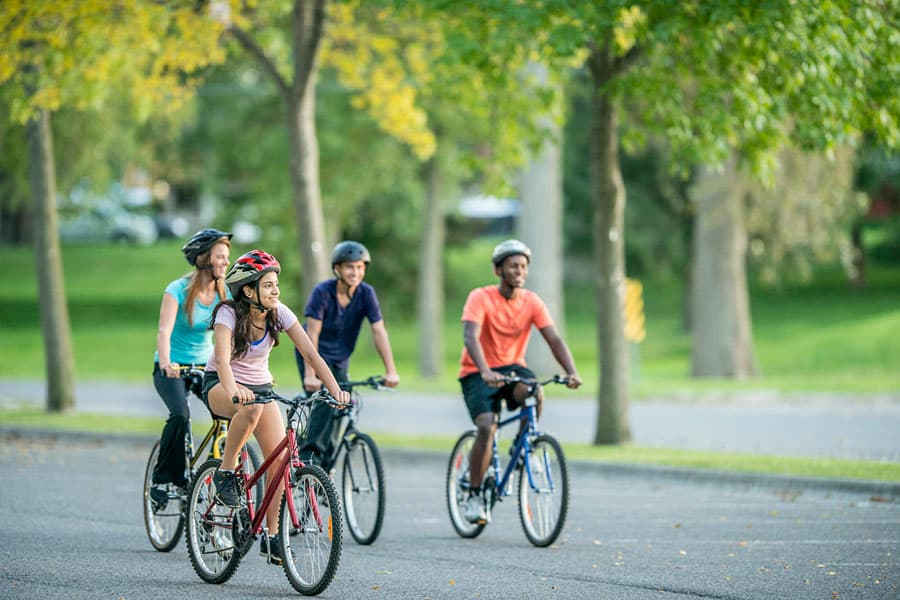
Adolescent health is extremely crucial. It is a time of massive physical changes and severe body image issues. Changes in body shape and functions alongside a media-spurred obsession with a perfect body make many young people struggle with low self-esteem and hatred for their normal body type.
Bringing back some focus on fit and healthy living can help to correct problems like negative self-image, body-image-related eating disorders, anxiety, and depression. An active lifestyle along with healthy food habits and optimum rest is the best trick to achieving an incredible physique.
Though there are many exercises for teenagers to try, it can be hard to find time to fit in a workout. Between school, homework, extracurricular activities, and socializing, there never seems to be enough time in the day. However, it is possible to make time for exercise even if you’re busy.
A few simple tips can help teenagers make the most of their busy schedules and stay fit and healthy alongside. Discussed here are 11 simple fitness tips for teenagers to chisel out the perfect teenage body out of you without sacrificing your other commitments!
Basic physical activity required for optimum teen fitness
Physical activity is important for teenagers for several reasons. For one, it helps to keep them healthy and fit. Centers for Disease Control and Prevention (CDC) [1]Centers for Disease Control and Prevention: How much physical activity do children need? recommends at least 60 minutes of physical exercise for teenagers every day. This can help to reduce their risk of developing obesity or other chronic health conditions later in life.
Additionally, regular physical activity can help teenagers improve their mental health and well-being. It can reduce stress, anxiety, and depression and boost mood, self-esteem, and positive body image.
Consequences of physical inactivity
Teenagers today are facing a real fitness crisis. Physical inactivity is a major problem among teens. According to one study by researchers from WHO [2]World Health Organization: New WHO-led study says majority of adolescents worldwide are not sufficiently physically active, putting their current and future health at risk, only one in three teenagers is physically fit.
Thanks to the proliferation of electronic devices and the sedentary activities these devices promote, like gaming and watching TV, teenagers are getting less and less physical activity. This lack of physical activity can lead to a host of health problems, including obesity, heart disease, and diabetes.
In addition, inactive teenagers are also more likely to suffer from depression, anxiety, and lack of focus. With so much at stake, it’s important for teenagers to make sure they get enough exercise every day. Sadly, for many teenagers, that just isn’t happening.
The good news is that there are a number of ways teenagers get moving and boost their fitness levels. Many schools now offer fitness programs tailored for their students. There are a variety of community-based organizations that offer sports and other activities for teenagers. With a little effort, all teenagers can get the exercise needed to stay healthy and happy.
| Worldwide Obesity Stats: (WHO June 2021) [3]World Health Organization: Obesity and overweight |
| Worldwide obesity has nearly tripled since 1975. |
| In 2016, more than 1.9 billion adults 18 years and older were overweight. Of these, over 650 million were obese. |
| 39% of adults aged 18 years and over were overweight in 2016, and 13% were obese. |
| Over 340 million children and adolescents aged 5-19 were overweight or obese in 2016. |
| 39 million children under the age of 5 were overweight or obese in 2020. |
How much physical activity does a teenager need?
According to experts, most teenagers need about 60 minutes or more of physical exercise every day. This should include a mix of moderate- and vigorous-intensity aerobic activities, like playing tennis, riding a bike, running, or swimming.
Teenagers should also try to do muscle-strengthening activities at least 3 times per week. These can include Push-ups, sit-ups, weights, or games like football or basketball. These activities make teenagers stronger and better able to handle everyday activities and enable them to participate in more strenuous activities without getting tired quickly. They can also help reduce the risk of injuries by promoting strength, focus, and balance.
In addition to the physical benefits, regular physical [4]World Health Organization: Physical activity activity can also improve teenagers’ mental health, help them manage stress, and boost their self-esteem. It can also promote healthy growth and development during this critical growth phase of their lives. So, teenagers need to ensure that staying fit becomes a part of their life.
Creative fitness tips for teenagers
Physically active teenagers are more likely to become physically active adults, which has a host of benefits for both individual health and public health. Therefore, teenagers must get the recommended amount of physical activity. Here are a few tips for teenagers to get them moving, active and fit:
1. Get up and move
Being physically active is vital for teenagers. It helps them maintain a healthy weight, improve their mood, and reduce their risk of developing chronic diseases later in life. However, teenagers can often be reluctant to get up and move. If you are a teenager looking for ideas to get yourself off the couch, here are a few suggestions:
- Try activities you love. Some might enjoy a run, a long walk, or a swim. Others may enjoy exercises like spin, pilates, yoga, and so on.
- Taking a brisk walk or going for a bike ride are great ways to get some fresh air and exercise at the same time.
- Some of you may enjoy team games like soccer, basketball, or baseball. Joining an organized sports team is a great way to meet new friends and stay active.
- Try out new activities, such as hiking, rock climbing, or dancing.
- Many schools now offer fitness programs like personal training programs. These are a great way to get you started on your journey and achieve a healthy life.
- There are also many community-based organizations that offer sports and other activities for teenagers.
- If you find it difficult to get up and get moving, try starting with a small goal, like 20 or 30 minutes of activity per day.
2. Make screen time count
With teenagers spending an average of seven hours a day staring at screens, it’s more important than ever to make sure that screen time is also productive time. With a little bit of effort, teenagers can make sure that their screen time is also helping them to stay fit and healthy. Here are a few ideas teens can try:
- While sitting in front of the TV, get your toes to curl up and down.
- Lift one knee at a time towards your chest while keeping your back straight.
- Place both hands on the armrests of your chair and push yourself up until you are standing.
- Alternate between putting your left foot and your right foot in front of you and bending down to touch them with your hand.
- Lean back in your chair until you feel a stretch in your abdominal muscles, then return to an upright position. Be very careful as you do this. You do not want to trip over backward and risk any injury.
Apart from these tips, teenagers can try using the plethora of online apps, devices, and resources to get physically active. The best part is that some online apps are available for free.
3. Make workouts enjoyable
Working out doesn’t have to be a chore. In fact, it can be downright enjoyable if you approach it the right way. One of the best ways to make sure you stick with your workout routine is to find exercises that you actually enjoy doing. This might mean signing up for a sports team or joining a dance class.
The more outdoorsy among you can try hiking or swimming. If you’re more of a solitary type, you might prefer taking up walking, running, or biking. The important thing is to find activities that suit your personality and interests. That way, you’re more likely to stick with them in the long run. Plus, you’ll reap all the physical and mental benefits of regular exercise.
4. Participate in sports
Participation in organized sports is beneficial for teenagers in many ways. Firstly, it helps them stay physically active, which is vital for being physically fit and maintaining overall health. Secondly, it can improve academic performance by providing an outlet for energy and promoting concentration and focus. Thirdly, teens who participate in sports develop social as well as teamwork skills. Finally, participation in sports can instill a sense of discipline and responsibility in teenagers.
For all these reasons, it is important for teenagers to participate in sports. Parents, schools, and colleges must also take a proactive role in encouraging teenagers’ participation in sports. There are many ways to do this, such as providing financial support for participation, offering transportation to practices and games, and creating opportunities for teenagers to play sports.
6. Get enough sleep
Getting enough sleep is critical for teenagers, who are growing and developing at a rapid pace. According to a study [5]Sleep Foundation: Teens and Sleep by the National Sleep Foundation, teenagers need 8-10 hours of sleep every night to function properly. While it may be tempting to stay up late and sleep in, there are good reasons to get enough rest. For one, sleep is essential for recovery.
During sleep, our bodies repair damaged cells and tissues, replenish energy stores, and consolidate memories. Lack of sleep can negatively impact physical health, mental health, and academic performance. For example, sleep deprivation can cause mood swings, irritability, and difficulty concentrating.
Not getting the right amount of sleep can lead to physical health problems like obesity and heart disease, an increased risk for accidents and injuries, and mental health problems like depression and anxiety. It can also negatively impact academic performance. So if you’re struggling to get enough shut-eye, talk to your doctor or a sleep specialist. They can help you identify underlying causes and develop a plan to get the rest you need.
It can be challenging to get the recommended amount of rest when faced with busy schedules and late nights. You can do a few things to get enough sleep and achieve your fitness goals.
- Try to go to bed and wake up at the same time every day. This will help set your body’s internal clock and make it easier to fall asleep.
- Create a sleeping environment that is dark, quiet, and cool.
- Avoid caffeine before bedtime. Caffeine can keep you awake and may disrupt your sleep cycle.
- Establish a bedtime routine that includes winding down for 30 minutes before sleep. This could include reading, relaxation exercises, or listening to calm music.
- Ensure that your mattress and pillow are comfortable and supportive.
- Exercise regularly. This will help you fall asleep faster and sleep more soundly. Make sure to avoid heavy exercises an hour or two before bedtime, as heavy physical activity is known to interfere with sleep.
- Maintain a journal to track your sleep habits.
7. Watch your diet
Teenagers should be careful about what they eat. Overeating unhealthy food can lead to obesity, causing several health problems. Instead, teenagers should eat healthy foods that help them maintain a healthy weight.
There are many ways to do this, including eating more fruits and vegetables, choosing leaner protein sources, and avoiding sugary drinks. By making smart choices about their diet, teenagers can improve their overall health and avoid potential problems down the road.
8. Study in motion
Often teenagers have a lot of schoolwork and homework to juggle, and it can be tough to find time to fit in exercise. However, recent studies have shown that teenagers who incorporate simple exercises into their study routine perform better academically than those who don’t. And it doesn’t have to be a strenuous workout – even something as simple as a brisk walk or some light stretching can make a difference. So next time you’re stuck at your desk trying to focus on your studies, take a break and get moving about – your brain will thank you for it!
9. Mini workouts for teens
It is not difficult to squeeze in a few quick exercises during your breaks. Try some of these quick workouts when you can find time and a little quiet space:
- Do some basic stretches to loosen up your muscles
- Jog in place or do jumping jacks for a few minutes
- Do crunches, sit-ups, or other abdominal exercises
- Jump rope for a few minutes
- Take a brisk walk around your neighborhood
10. Ab workouts for teens
As a teenager, you’re probably always looking for ways to improve your physical appearance. One way to do this is by developing a strong core. A well-toned core can make you look good in all your favorite outfits and help you perform better in sports. The best part is that you don’t need to join gym and spend hours there to get results. There are plenty of quick ab workouts that you can do at home with little or no equipment.
One simple workout that you can do is called the plank. To do this exercise, start by getting into a push-up position. Then, lower yourself down so that your elbows and forearms are resting on the ground. Hold this position for 30 seconds. If you can’t hold it for that long, start with shorter intervals and work your way up.
Another great ab exercise is the bicycle crunch. To do this, lie on your back on the floor and place your hands behind your head. Bring your knees in towards your chest. Simultaneously lift your shoulder blades off the floor. Hold this position for as long as you can, then switch positions and repeat.
11. Dance
Dancing, a kind of aerobic exercise, is a great way to get your heart rate up and have some fun. In addition to the physical benefits of dancing, research has shown that it can also improve mental health by reducing stress and anxiety, improving mood, and increasing self-confidence. It also enhances grace, coordination, and balance. So, whether you’re planning on joining a dance class or just busting a move in your bedroom, remember that dance is a great workout for both your body and your mind.
Note to keep in mind
Most of these exercises require guidance and supervision of an expert or an experienced adult. Consider working out with a personal trainer who can ensure you are doing the right combination of exercises based on your body composition and type. He or she will also ensure that you are maintaining proper form while performing exercises or using gym equipment like dumbbells and barbells.
Avoiding overexertion and injury is paramount during these crucial years. Adult supervision is crucial in this respect.
Keep an eye on your nutrition too. You should be aware of how many calories you are consuming in proportion to the number of calories you are burning. Ensure that you consume a healthy diet with enough proteins, healthy fats, fiber, non-starchy carbs, vitamins, and minerals to support your workout regime. Burning calories do not exactly go hand in hand with consuming junk food.
A healthy diet will help you lose body fat while promoting healthy muscle growth. Lean, or bulky, all teenagers must focus on developing muscle mass. Building muscle mass in your teen years has a greater chance of positively impacting your health throughout your adult years.
Conclusion
Staying fit and physically active as a teenager doesn’t have to be difficult. Neither does being self-confident and comfortable in your own skin. Just by making some simple changes to your lifestyle and mindset, you can reap the many benefits of a healthy body and a positive self-image.
The good news is that there are things that you can do to develop a healthy body image and good self-esteem. If you’re unhappy with your appearance, talk to a trusted adult about it. You can also try to focus on the things that you like about your body. And remember, no one is perfect – everyone has flaws. Embrace your imperfections along with your uniqueness and focus on being healthy, both mentally and physically.
There are plenty of ways to get in a good workout without spending hours at the gym. Staying fit and physically active as a teenager can be easy – you just need to be creative with your time. So get moving and have some fun!
References
| ↑1 | Centers for Disease Control and Prevention: How much physical activity do children need? |
|---|---|
| ↑2 | World Health Organization: New WHO-led study says majority of adolescents worldwide are not sufficiently physically active, putting their current and future health at risk |
| ↑3 | World Health Organization: Obesity and overweight |
| ↑4 | World Health Organization: Physical activity |
| ↑5 | Sleep Foundation: Teens and Sleep |



